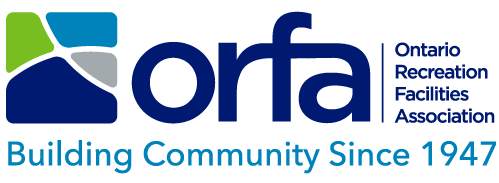- ORFA Home
- The Recreation Facility Profession
- ORFA News and Alerts
- Arena Legionella Contamination
ORFA News
What is Legionnaires' Disease - should we be concerned about it in our operations?
Awareness of potential hazards and hazardous situations are key to ensuring that it does not occur.
One potential hazard that has recently raised its ugly head is legionnaires disease. The official medical term is “legionellious”, but it is often referred to as Legionnaires disease or Pontiac Fever; as there was once an outbreak of the disease that occurred in Pontiac, Michigan that baffled officials leaving them puzzled with regards to what was affecting their community.
Legionnaires disease is an uncommon, but a serious type of pneumonia that usually affects middle-aged to elderly persons. Smokers and persons with chest problems are also at risk. Inhaling small droplets of water suspended in the air containing the “Legionella bacterium” contracts legionnaires disease. Most people exposed to this bacterium do not become sick. If contracted, it cannot spread from person to person.
The Legionella bacterium is widespread in nature. It primarily lives in water pond’s - where it usually does no harm. Outbreaks are usually linked to water systems, which are warm enough to encourage growth of the bacteria and can spread droplets of water over a wide area. Because the systems are very much like the flu, it is not always easy to detect. It can only be treated with antibiotics.
Symptoms include:
- High temperature, fever, and chills
- Cough
- Muscle pain
- Headache
- Development of pneumonia
- Diarrhea
- Signs of mental confusion
Medical testing is the only true way to detect the presence of the disease. The medical community must report the presence of Legionnaires disease to the local public health unit.
Cautions are extended in the following areas:
- Workers performing work on rooftops during the warm summer months where cooling towers are present
- Lack of maintenance to building HVAC systems
- Heated snow dump pits
Any form of condenser or cooling tower used in relation to refrigeration systems or general power or industrial process cooling systems is a potential concern for a Legionnaires' concern. It is a standard operating procedure for most responsible operators of such equipment to have this as an important aspect of their cooling water treatment program. A further point is that although the primary concern is with airborne droplet/vapour drift relative to potential public contact, even if there is no public risk relative to the plants location one must still be aware of the facility and engineering staff that work with or close to the condenser or cooling tower. One can only trust that arena owners that utilize outdoor condensers in generally populated areas and who have staff or contractors working near these potential hazardous locations would be appropriately addressing this potential concern.
The major risk factor for legionellae proliferation appears to be neglect or insufficient maintenance. A significant proportion of outbreaks of Legionnaires’ disease in these systems have been attributable to the start-up of stagnant systems without adequate chemical treatment. Cooling towers and evaporative condensers are generally designed to maximize operational performance of a thermal system; however, an effective water treatment program in controlling legionellae proliferation is essential. Such a program has multiple benefits, in that it provides for more efficient operation from reduced fouling and a longer system life from reduced corrosion, while ensuring safer operation of the system due to reduced risk of legionella. Maintenance of properly treated cooling systems is also an essential element in reducing legionellae risks in these environments. (Source: World Health Organization)
